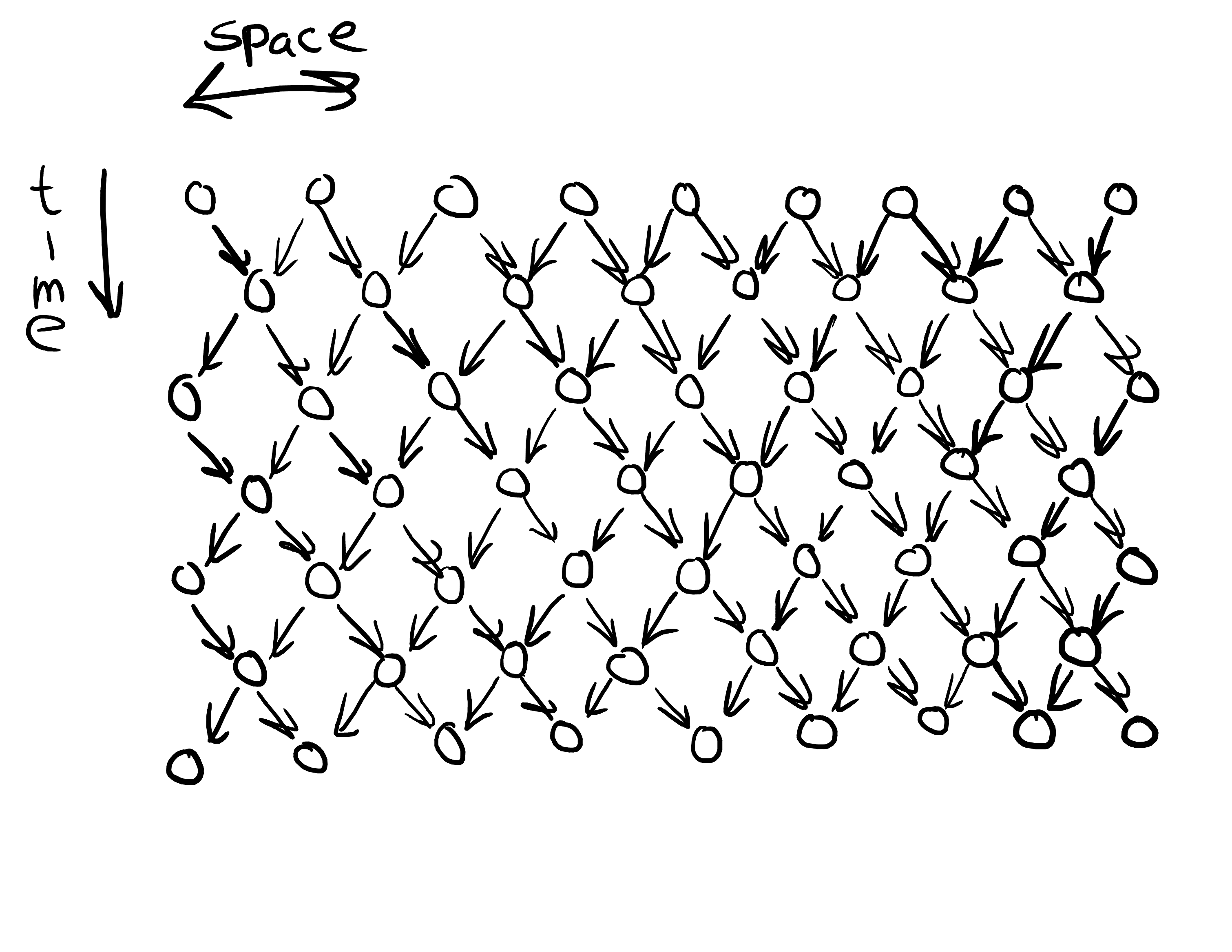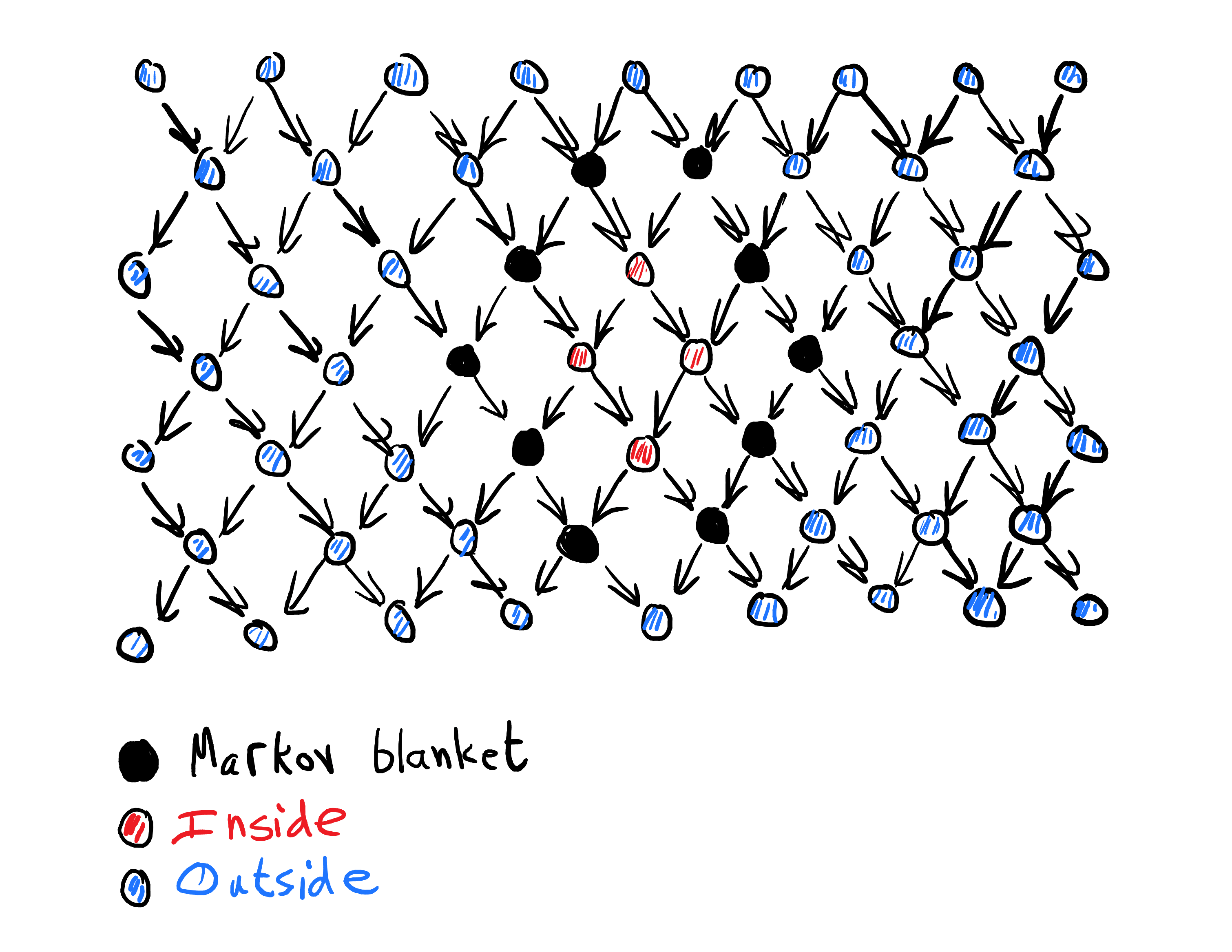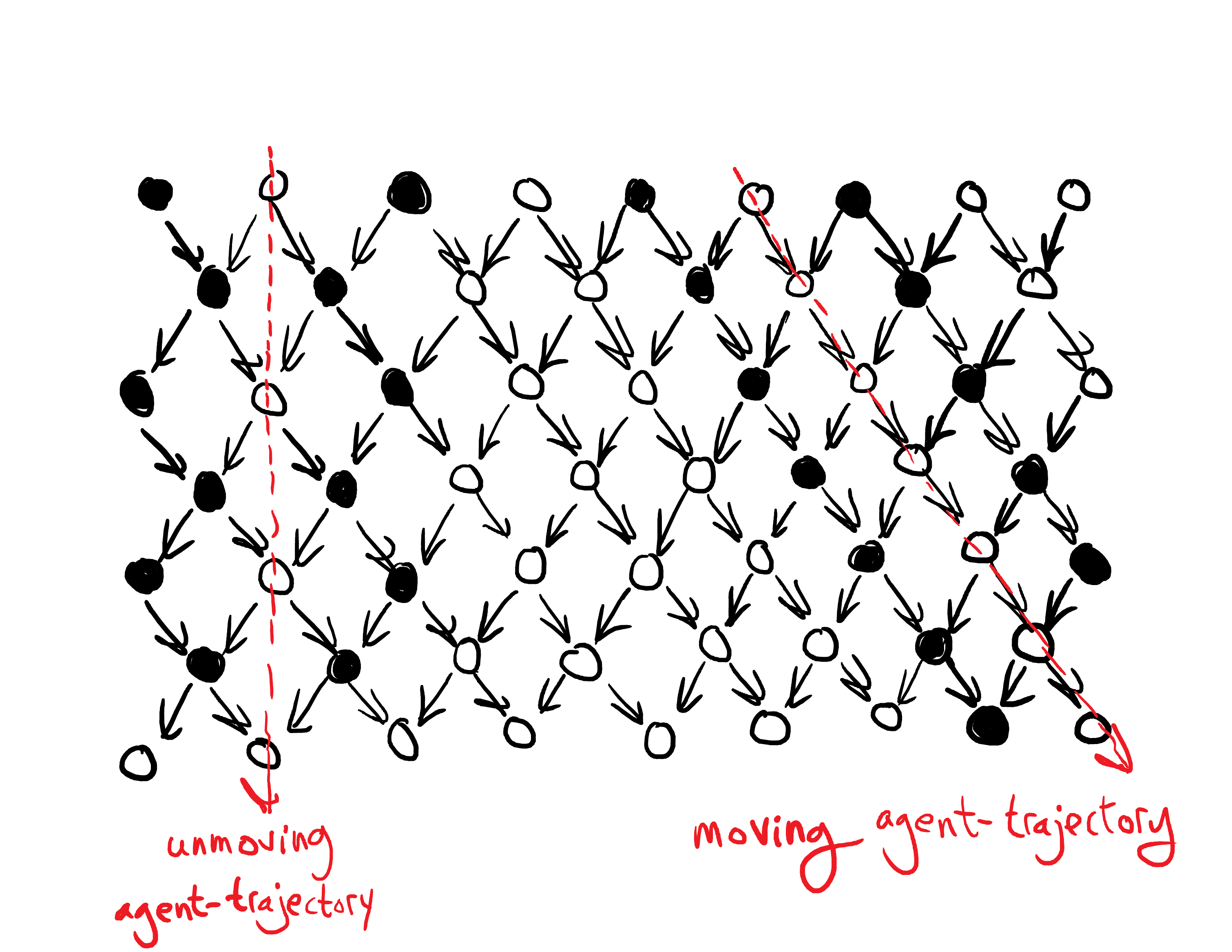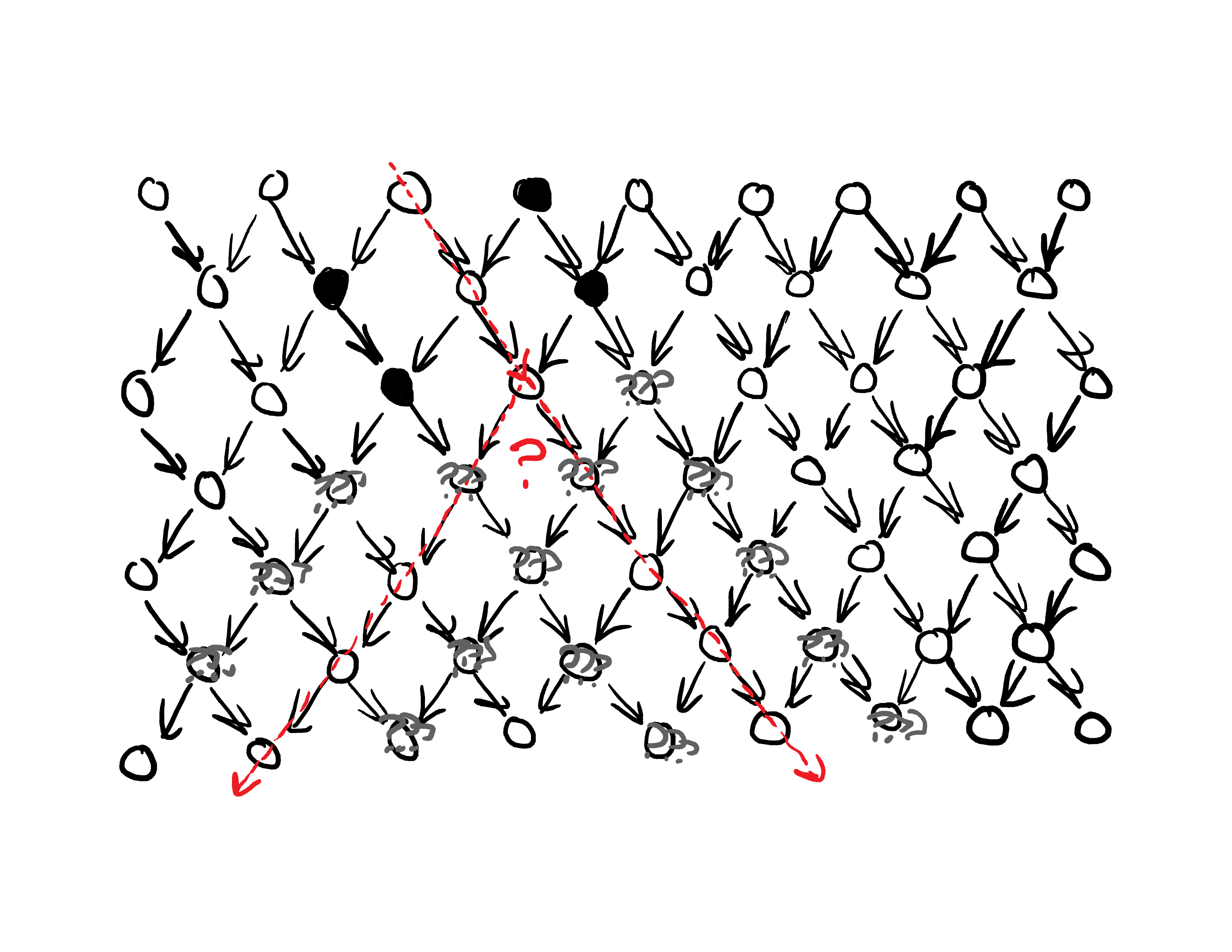Agent Boundaries Aren't Markov Blankets. [Unless they're non-causal; see comments.]
16johnswentworth
4abramdemski
4johnswentworth
2abramdemski
1Dalcy
2abramdemski
New Comment
I think you use too narrow a notion of Markov blankets here. I'd call the notion you're using "structural Markov blankets" - a set of nodes in a Bayes net which screens off one side from another structurally (i.e. it's a cut of the graph). Insofar as Markov blankets are useful for delineating agent boundaries, I expect the relevant notion of "Markov blanket" is more general: just some random variable such that one chunk of variables is independent of another conditional on the blanket.
... I was expecting you'd push back a bit, so I'm going to fill in the push-back I was expecting here.
Sam's argument still generalizes beyond the case of graphical models. Our model is going to have some variables in it, and if we don't know in advance where the agent will be at each timestep, then presumably we don't know which of those variables (or which function of those variables, etc) will be our Markov blanket. On the other hand, if we knew which variables or which function of the variables were the blanket, then presumably we'd already know where the agent is, so presumably we're already conditioning on something when we say "the agent's boundary is a Markov blanket".
I think that is a basically-correct argument. It doesn't actually argue that agent boundaries aren't Markov boundaries; I still think agent boundaries are basically Markov boundaries. But the argument implies that the most naive setup is missing some piece having to do with "where the agent is".
I find your attempted clarification confusing.
Our model is going to have some variables in it, and if we don't know in advance where the agent will be at each timestep, then presumably we don't know which of those variables (or which function of those variables, etc) will be our Markov blanket.
No? A probabilistic model can just be a probability distribution over events, with no "random variables in it". It seemed like your suggestion was to define the random variables later, "on top of" the probabilistic model, not as an intrinsic part of the model, so as to avoid the objection that a physics-ish model won't have agent-ish variables in it.
So the random variables for our markov blanket can just be defined as things like skin surface temperature & surface lighting & so on; random variables which can be derived from a physics-ish event space, but not by any particularly simple means (since the location of these things keeps changing).
On the other hand, if we knew which variables or which function of the variables were the blanket, then presumably we'd already know where the agent is, so presumably we're already conditioning on something when we say "the agent's boundary is a Markov blanket".
Again, no? If I know skin surface temperature and lighting conditions and so on all add up to a Markov blanket, I don't thereby know where the skin is.
I think that is a basically-correct argument. It doesn't actually argue that agent boundaries aren't Markov boundaries; I still think agent boundaries are basically Markov boundaries. But the argument implies that the most naive setup is missing some piece having to do with "where the agent is".
It seems like you agree with Sam way more than would naively be suggested by your initial reply. I don't understand why.
When I talked with Sam about this recently, he was somewhat satisfied by your reply, but he did think there were a bunch of questions which follow. By giving up on the idea that the markov blanket can be "built up" from an underlying causal model, we potentially give up on a lot of niceness desiderata which we might have wanted. So there's a natural question of how much you want to try and recover, which you could have gotten from "structural" markov blankets, and might be able to get some other way, but don't automatically get from arbitrary markov blankets.
In particular, if I had to guess: causal properties? I don't know about you, but my OP was mainly directed at Critch, and iiuc Critch wants the Markov blanket to have some causal properties so that we can talk about input/output. I also find it appealing for "agent boundaries" to have some property like that. But if the random variables are unrelated to a causal graph (which, again, is how I understood your proposal) then it seems difficult to recover anything like that.
a Markov blanket represents a probabilistic fact about the model without any knowledge you possess about values of specific variables, so it doesn't matter if you actually do know which way the agent chooses to go.
The usual definition of Markov blankets is in terms of the model without any knowledge of the specific values as you say, but I think in Critch's formalism this isn't the case. Specifically, he defines the 'Markov Boundary' of (being the non-abstracted physics-ish model) as a function of the random variable (where he writes e.g. ), so it can depend on the values instantiated at .
- it would just not make sense to try to represent agent boundaries in a physics-ish model if we were to use the usual definition of Markov blankets - the model would just consist of local rules that are spacetime homogeneous, so there is no reason to expect one can apriori carve out an agent from the model without looking at its specific instantiated values.
- can really be anything, so doesn't necessarily have to correspond to physical regions (subsets) of , but they can be if we choose to restricting our search of infiltration/exfiltration-criteria-satisfying to functions that only return boundaries-in-the-sense-of-carving-the-physical-space.
- e.g. can represent which subset of the physical boundary is, like 0, 0, 1, 0, 0, ... 1, 1, 0
So I think under this definition of Markov blankets, they can be used to denote agent boundaries, even in physics-ish models (i.e. ones that relate nicely to causal relationships). I'd like to know what you think about this.
Critch's formalism isn't a markov blanket anyway, as far as I understand it, since he cares about approximate information boundaries rather than perfect Markov properties. Possibly he should not have called his thing "directed markov blankets" although I could be missing something.
If I take your point in isolation, and try to imagine a Markov blanket where the variables of the boundary can depend on the value of , then I have questions about how you define conditional independence, to generalize the usual definition of Markov blankets. My initial thought is that your point will end up equivalent to John's comment. IE we can construct random variables which allow us to define Markov blankets in the usual fixed way, while still respecting the intuition of "changing our selection of random variables depending on the world state".
Curated and popular this week



